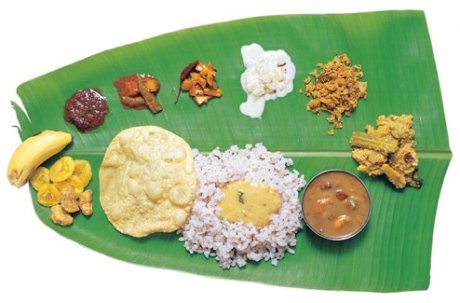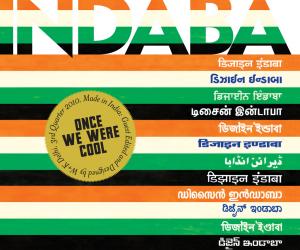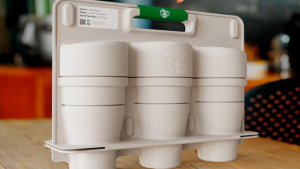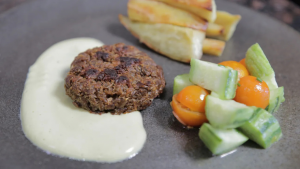First Published in

Meals in India, even in their simplest form, are akin to ritual and are treated accordingly. From preparation to consumption, careful design is discernible.
The key concept is rasa, a word that is translated literally as sap, juice or essence. It is used not only in the context of food but it dominates the realm of all Indian aesthetics. The enjoyment of music, dance, literature and art is inseparable from it. In short, and at the risk of some oversimplification, it may be said that rasa emerges when physical sensations stir dormant emotions, recall memories and create a certain mood – erotic or heroic, romantic or comic, tragic or tranquil. Thus, in India, food is seen as a significant mood manipulator.
Ayurved, the ancient Indian art and science of a good life, has refined the concept of rasa, adding the therapeutic element to the aesthetic. According to ayurvedic principles, individuals are characterised by different proportions of three basic elements – vata (air), pitta (phlegm) and kapha (cough). Ayurved seeks to remedy any imbalance between these three basic elements primarily through diet, and this idea permeates the “philosophy of food” commonly shared by people all across the subcontinent. Different ingredients are believed to have inherent guna (properties) and a corresponding impact on the human system. This impact changes according to the cooking method, the season, and the overall combination of ingredients in a meal.
India has six seasons and six basic tastes – salty, sweet, sour, bitter, pungent and astringent – which are used in the preparation of food to help the swabhav (one’s natural constitution) maintain harmony with the prakriti (nature in a specific time and place). The challenge is to always successfully design a menu that is appropriate for the individual in a way that ensures harmony between the microcosm and the macrocosm (the human body and the broader world). So for instance, summer dishes will have a higher salty and sweet component, to help the rehydration process, while a more astringent taste will help fight the natural tendency of the body to get sick during monsoon, and in winter, the taste of meals would have a stronger sweet taste, to give the body the calories it needs in the colder weather.
Traditionally in India, eating is treated like a yajna (sacred rite) where offerings are placed in the fire within an altar to be transported to the deities: the human body is therefore the altar where digestive fire burns.
For an Indian meal, the appearance is as important as is the choice of ingredients, and a minute concern with details is reflected in the choice of materials and the shape of cooking and serving vessels; the forms of such vessels have over time been perfected to optimise their function.
Cooking and serving vessels made of different materials are believed to have specific properties that are passed onto the food cooked or served in them. For instance, the dishes that are cooked in a cast iron karahi (Indian kind of wok, typically used for deep frying) absorb iron, as a nutritional element, during the cooking process.
The Indian meal is traditionally served in a metal thali (large round plate) on which a number of small katori (bowls) are placed. Drinking water is poured into a metal glass. The word thali is derived from the Sanskrit word sthali – a designated spot, in this case the place to keep edibles. In princely households these thali and katori were of gold or silver and other affluent persons ate off bell metalware. In southern and eastern India green banana leaves are widely used as serving plates, but the guiding principle remains the same.
Whether they are everyday or ceremonial, Indian meals are improvisations on the classic thali theme. Typically, a thali would include rotis (bread, in North India) or rice (in South India), daal (lentils), two different preparations of vegetables (one dry and one with gravy), mutton, chicken or fish for the meat-eaters, raita (a combination of yogurt with onion, carrot and cucumber) and pickle. This pre-plated system allows the diner to enjoy the multi-dish meal visually in its entirety, in polychromatic resplendence. No pre-set sequence of courses is imposed.
A thali is indeed a moveable feast.
Meals in India are traditionally conceived to cater to all five senses and play around with different, seasonally appropriate ingredients to obtain attractive hues and alluring aromas. But in the recent years, things have been changing. The concept of seasonal ingredients is outdated – all fruit and vegetables are available year-round, and people no longer plan their meals according to the weather, and consequently fail to eat according to what their body needs.
The carefully designed structure of the traditional Indian meal is often compromised by contemporary eating habits: people approach Indian cuisine with a Western attitude, mixing local dishes with foreign desserts, pre-plating food and eating it with a fork and knife, while Indian cuisine has been especially designed to be eaten with the hands and not with any metal tool.
There is native genius in the culinary system of every civilization that needs to be kept alive through the traditional way of cooking and eating. Indian meals are a complex multi-sensual design achievement – one that has been perfected over centuries. Respecting the wisdom ingrained in these meals is the only way to fully enjoy the truly ecstatic experience that they offer.
Pushpesh Pant is an author, teacher, TV anchor and independent producer of documentaries. He has taught at Delhi University and Jawaharlal Nehru University, Delhi. He is a regular contributor for BBC and NPR.
* Is what is commonly written on signs outside restaurants in Kerala to announce that lunch is being served.
Meals in India, even in their simplest form, are akin to ritual and are treated accordingly. From preparation to consumption, careful design is discernible.
The key concept is rasa, a word that is translated literally as sap, juice or essence. It is used not only in the context of food but it dominates the realm of all Indian aesthetics. The enjoyment of music, dance, literature and art is inseparable from it. In short, and at the risk of some oversimplification, it may be said that rasa emerges when physical sensations stir dormant emotions, recall memories and create a certain mood – erotic or heroic, romantic or comic, tragic or tranquil. Thus, in India, food is seen as a significant mood manipulator.
Ayurved, the ancient Indian art and science of a good life, has refined the concept of rasa, adding the therapeutic element to the aesthetic. According to ayurvedic principles, individuals are characterised by different proportions of three basic elements – vata (air), pitta (phlegm) and kapha (cough). Ayurved seeks to remedy any imbalance between these three basic elements primarily through diet, and this idea permeates the “philosophy of food” commonly shared by people all across the subcontinent. Different ingredients are believed to have inherent guna (properties) and a corresponding impact on the human system. This impact changes according to the cooking method, the season, and the overall combination of ingredients in a meal.
India has six seasons and six basic tastes – salty, sweet, sour, bitter, pungent and astringent – which are used in the preparation of food to help the swabhav (one’s natural constitution) maintain harmony with the prakriti (nature in a specific time and place). The challenge is to always successfully design a menu that is appropriate for the individual in a way that ensures harmony between the microcosm and the macrocosm (the human body and the broader world). So for instance, summer dishes will have a higher salty and sweet component, to help the rehydration process, while a more astringent taste will help fight the natural tendency of the body to get sick during monsoon, and in winter, the taste of meals would have a stronger sweet taste, to give the body the calories it needs in the colder weather.
Traditionally in India, eating is treated like a yajna (sacred rite) where offerings are placed in the fire within an altar to be transported to the deities: the human body is therefore the altar where digestive fire burns.
For an Indian meal, the appearance is as important as is the choice of ingredients, and a minute concern with details is reflected in the choice of materials and the shape of cooking and serving vessels; the forms of such vessels have over time been perfected to optimise their function.
Cooking and serving vessels made of different materials are believed to have specific properties that are passed onto the food cooked or served in them. For instance, the dishes that are cooked in a cast iron karahi (Indian kind of wok, typically used for deep frying) absorb iron, as a nutritional element, during the cooking process.
The Indian meal is traditionally served in a metal thali (large round plate) on which a number of small katori (bowls) are placed. Drinking water is poured into a metal glass. The word thali is derived from the Sanskrit word sthali – a designated spot, in this case the place to keep edibles. In princely households these thali and katori were of gold or silver and other affluent persons ate off bell metalware. In southern and eastern India green banana leaves are widely used as serving plates, but the guiding principle remains the same.
Whether they are everyday or ceremonial, Indian meals are improvisations on the classic thali theme. Typically, a thali would include rotis (bread, in North India) or rice (in South India), daal (lentils), two different preparations of vegetables (one dry and one with gravy), mutton, chicken or fish for the meat-eaters, raita (a combination of yogurt with onion, carrot and cucumber) and pickle. This pre-plated system allows the diner to enjoy the multi-dish meal visually in its entirety, in polychromatic resplendence. No pre-set sequence of courses is imposed.
A thali is indeed a moveable feast.
Meals in India are traditionally conceived to cater to all five senses and play around with different, seasonally appropriate ingredients to obtain attractive hues and alluring aromas. But in the recent years, things have been changing. The concept of seasonal ingredients is outdated – all fruit and vegetables are available year-round, and people no longer plan their meals according to the weather, and consequently fail to eat according to what their body needs.
The carefully designed structure of the traditional Indian meal is often compromised by contemporary eating habits: people approach Indian cuisine with a Western attitude, mixing local dishes with foreign desserts, pre-plating food and eating it with a fork and knife, while Indian cuisine has been especially designed to be eaten with the hands and not with any metal tool.
There is native genius in the culinary system of every civilization that needs to be kept alive through the traditional way of cooking and eating. Indian meals are a complex multi-sensual design achievement – one that has been perfected over centuries. Respecting the wisdom ingrained in these meals is the only way to fully enjoy the truly ecstatic experience that they offer.
Pushpesh Pant is an author, teacher, TV anchor and independent producer of documentaries. He has taught at Delhi University and Jawaharlal Nehru University, Delhi. He is a regular contributor for BBC and NPR.







